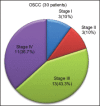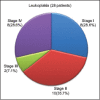Estimation of salivary sialic acid in oral premalignancy and oral squamous cell carcinoma
- PMID: 27994410
- PMCID: PMC5141657
- DOI: 10.4103/0976-237X.194108
Estimation of salivary sialic acid in oral premalignancy and oral squamous cell carcinoma
Abstract
Aims: Oral cancer is the most life-threatening disease of oral tissues. In societies where the incidence of oral cancer is high, clinically recognizable premalignant lesions are particularly common. Diagnosing oral cancers at an early stage is critical in improving the survival rate and reducing the morbidity associated with the disease. Alterations in the sialic acid levels in cancer patients have stimulated interest in this sugar residue as a possible tumor marker.
Settings and design: The purpose of this study was to estimate the salivary sialic acid levels in patients with oral premalignancy and squamous cell carcinoma and to correlate it with their grades to develop a cost-effective and noninvasive diagnostic parameter.
Materials and methods: Unstimulated whole saliva was collected from the groups under study and subjected to biochemical analysis for determination of sialic acid levels.
Statistical analysis used: The salivary sialic acid levels were correlated with the clinical stage and histological grade by one-way ANOVA (SPSS software version 15).
Results: Salivary sialic acid was elevated in oral squamous cell carcinoma (OSCC) compared to oral premalignancy and control group. A statistically significant correlation was observed between the grades of squamous cell carcinoma, grades of dysplasia in premalignancy, and sialic acid level.
Conclusion and clinical significance: Evaluation of salivary sialic acid levels in premalignant and malignant lesions can serve as a screening tool. The mortality and morbidity of OSCC can be reduced if the lesions are diagnosed in early precancerous states using such noninvasive diagnostic methods for screening and monitoring of the population.
Keywords: Leukoplakia; oral squamous cell carcinoma; saliva; sialic acid.
Conflict of interest statement
There are no conflicts of interest.
Figures




References
-
- Shpitzer T, Bahar G, Feinmesser R, Nagler RM. A comprehensive salivary analysis for oral cancer diagnosis. J Cancer Res Clin Oncol. 2007;133:613–7. - PubMed
-
- Rajpura KB, Patel PS, Chawda JG, Shah RM. Clinical significance of total and lipid bound sialic acid levels in oral pre-cancerous conditions and oral cancer. J Oral Pathol Med. 2005;34:263–7. - PubMed
-
- Scully C, Sudbø J, Speight PM. Progress in determining the malignant potential of oral lesions. J Oral Pathol Med. 2003;32:251–6. - PubMed
-
- Massano J, Regateiro FS, Januário G, Ferreira A. Oral squamous cell carcinoma: Review of prognostic and predictive factors. Oral Surg Oral Med Oral Pathol Oral Radiol Endod. 2006;102:67–76. - PubMed
LinkOut - more resources
Full Text Sources
Other Literature Sources

